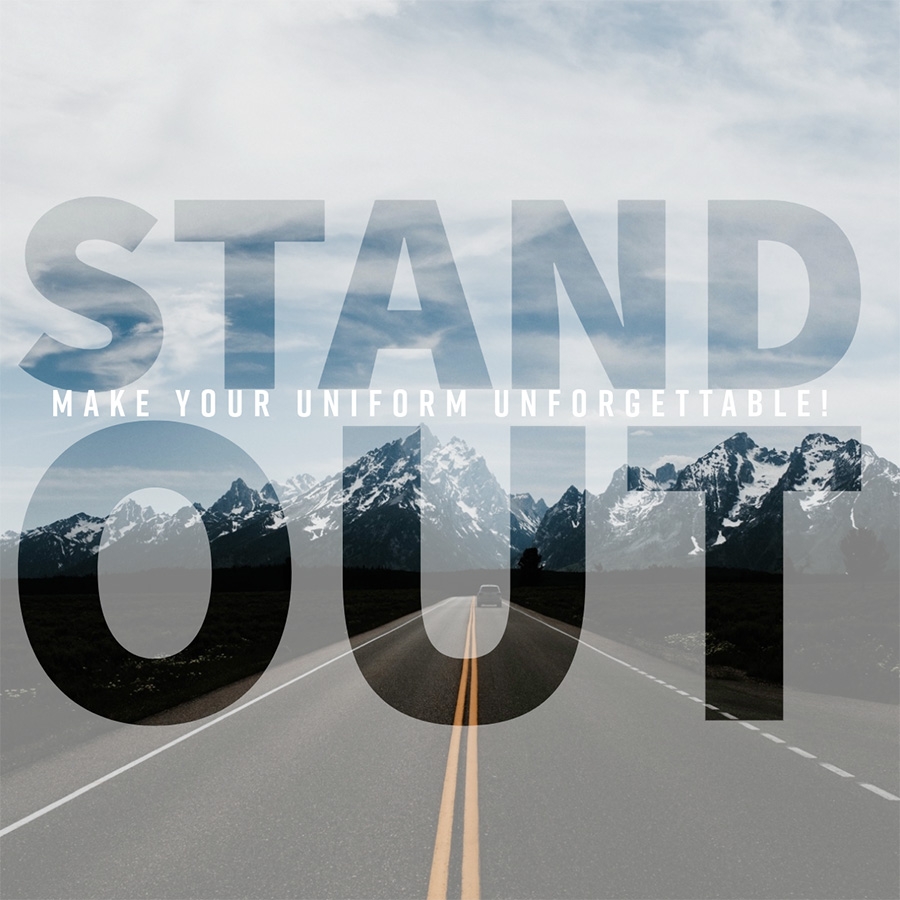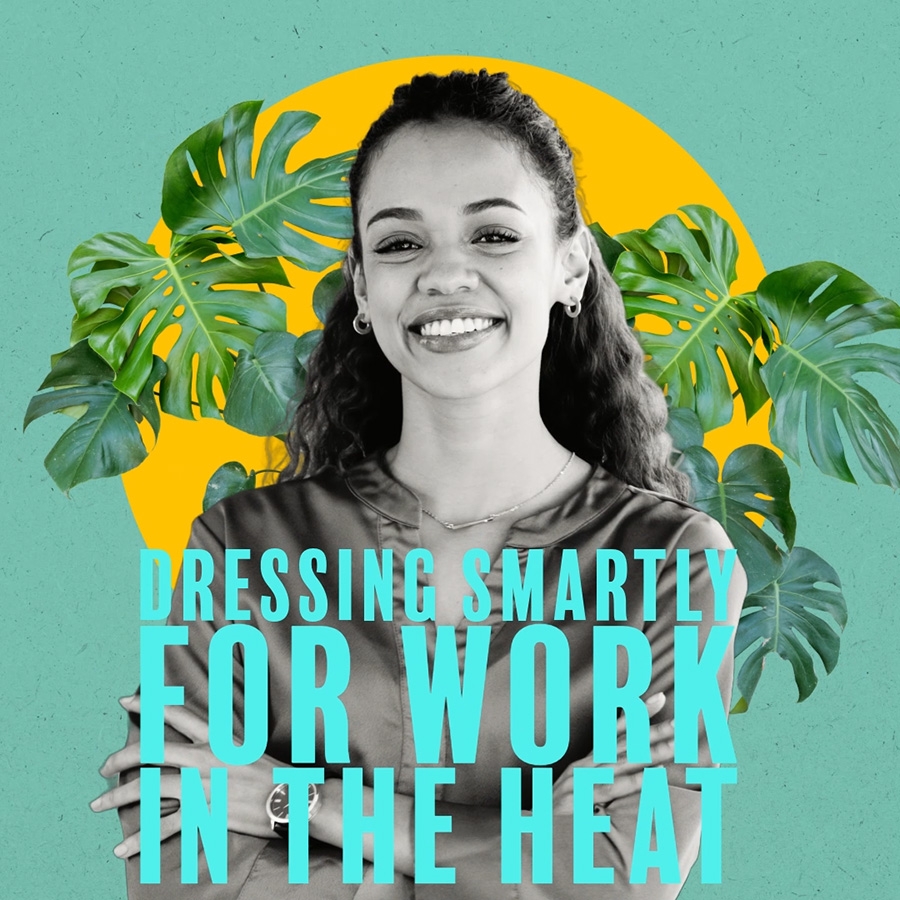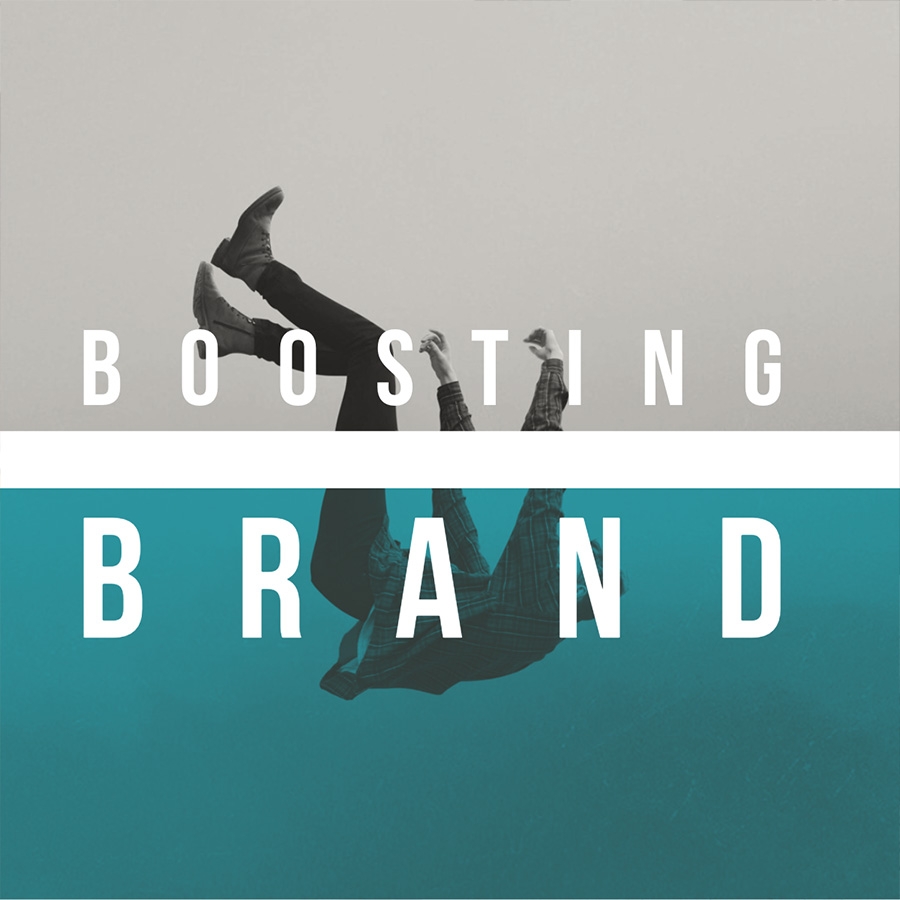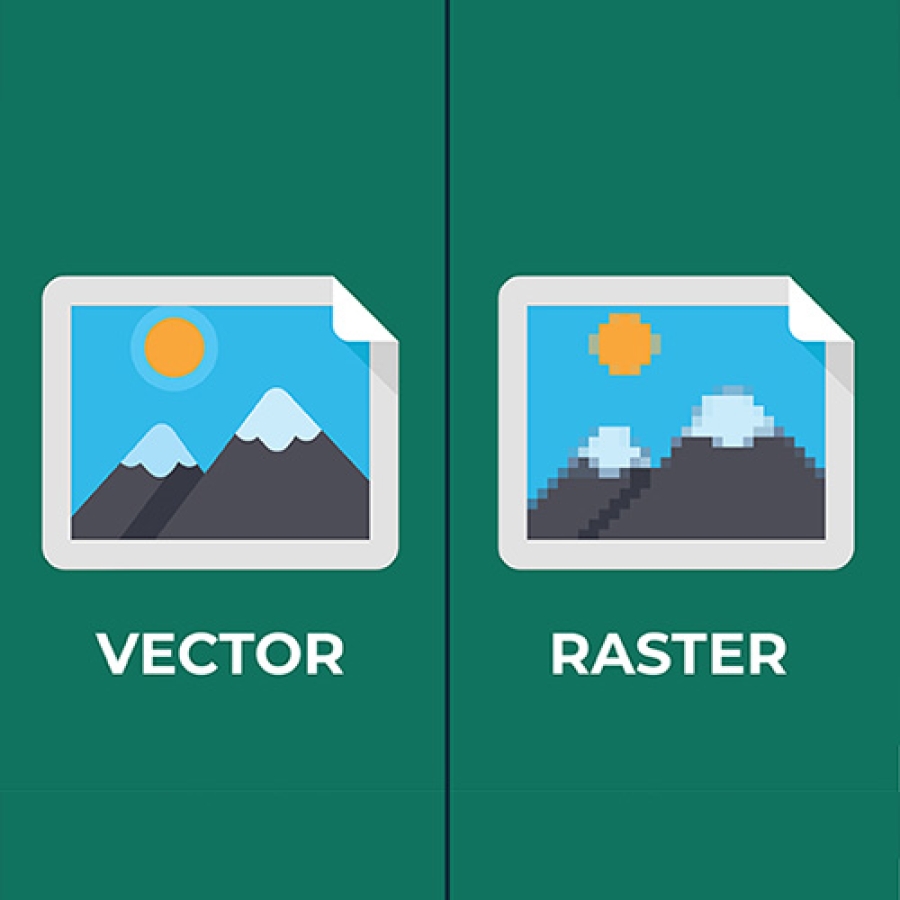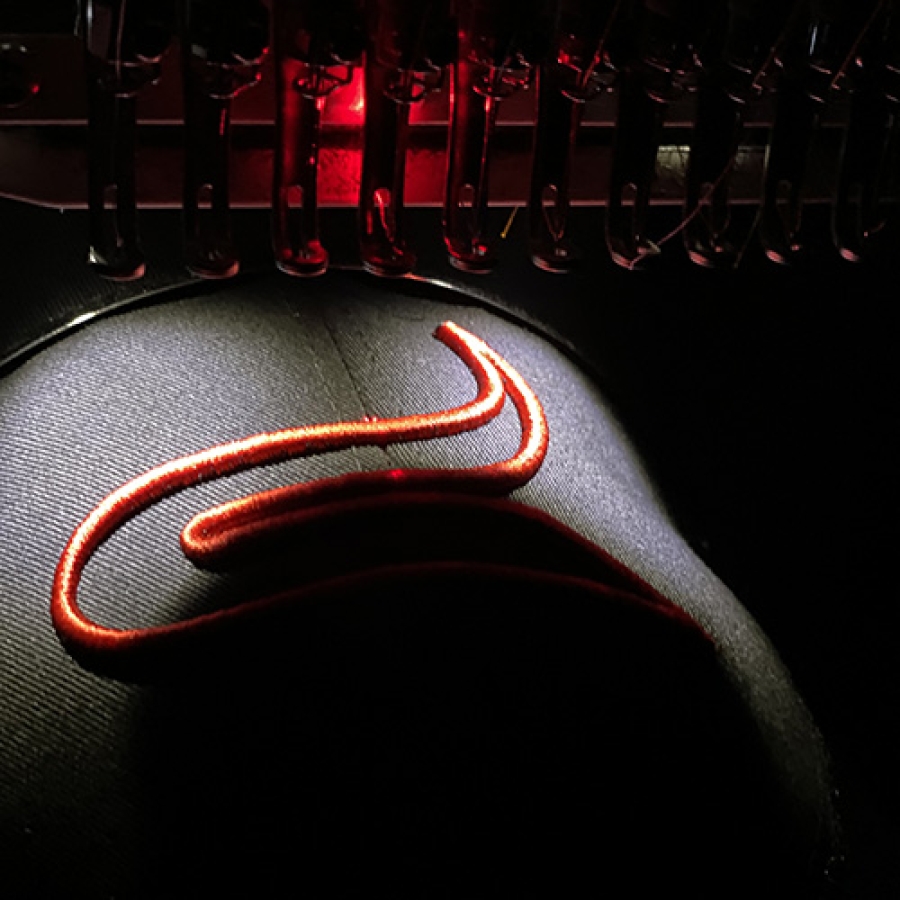Use These Simple Hacks to Make Your Uniform Unforgettable!
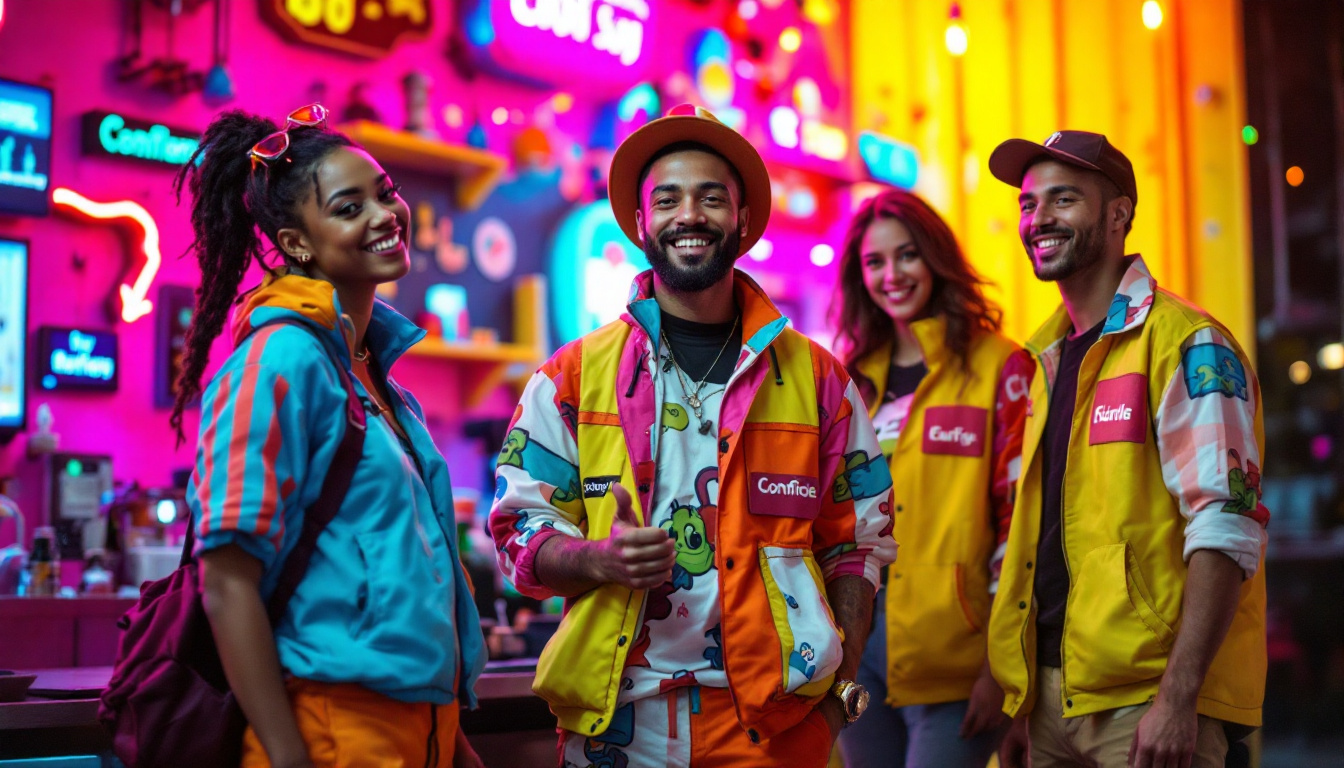
Discover effective strategies to elevate your uniform brand's identity and make a lasting impression.
Use These Simple Hacks to Make Your Uniform Unforgettable!
A strong uniform branding strategy can significantly elevate an organization's identity and recognition. In this article, we’ll explore various hacks and strategies to ensure your uniform brand remains unforgettable. Let’s delve into the importance of uniforms, the power of simplicity, and practical tips for enhancing your brand.
Understanding the Importance of a Memorable Uniform Brand
The significance of a memorable uniform brand cannot be overstated. It not only represents your company’s vision and values but also serves as a pivotal tool for recognition in a crowded marketplace.
Uniforms play a crucial role in branding by visually conveying the essence of an organization. When employees wear uniforms, they become walking advertisements, showcasing the brand’s identity to customers and the public.
A well-designed uniform aligns with the company's mission, creating a cohesive image that resonates with customers. It eliminates ambiguity, giving a professional appearance that builds trust and loyalty. Furthermore, uniforms can enhance team spirit and unity among employees, fostering a sense of belonging and pride in their work. This internal camaraderie often translates into improved customer service, as employees who feel connected to their brand are more likely to engage positively with customers.
Why Unforgettable Brands Matter
Unforgettable brands are essential for standing out in a competitive landscape. Such brands tend to foster a deep emotional connection with their audience, promoting customer loyalty and repeat business.
Moreover, memorable branding can lead to word-of-mouth referrals, which are both cost-effective and powerful in promoting a brand. When a uniform brand is unforgettable, it creates lasting impressions in the minds of customers, enhancing visibility. This visibility is particularly important in industries where competition is fierce; a unique uniform can become a distinguishing factor that sets a company apart. Additionally, memorable brands often leverage storytelling in their marketing, weaving narratives around their uniforms that resonate with customers on a personal level, thereby deepening their emotional investment in the brand.
The Power of Simplicity in Branding
Simplicity is a potent tool in the world of branding. A simple design can lead to higher recognition rates and easier recall for customers, making it an effective strategy for uniform branding.
Breaking Down the Concept of Simplicity
Simplicity doesn’t mean being bland; rather, it emphasizes clarity and ease of understanding. Uniforms should be designed to convey messages effortlessly, ensuring that viewers grasp their significance at a glance.
Opting for clean lines, minimalistic designs, and straightforward messaging can significantly enhance the impact of a uniform, making it more relatable and memorable. This approach not only helps in creating a cohesive visual identity but also allows brands to communicate their values and mission succinctly. For instance, a healthcare provider might choose crisp white uniforms to evoke a sense of cleanliness and professionalism, while a tech company could opt for sleek, modern designs that reflect innovation and forward-thinking.
How Simplicity Translates to Memorability
Memorable brands often have uncomplicated logos, straightforward color schemes, and clear communication. When these elements are applied to uniform design, they increase the likelihood of being remembered.
A streamlined approach to uniform branding enables customers to associate the uniform with a specific experience, product, or service, enhancing the overall recognition of the brand over time. Furthermore, the psychological impact of simplicity cannot be overlooked; research has shown that consumers are more likely to trust and engage with brands that present themselves in a clear and uncomplicated manner. This trust can lead to customer loyalty, as individuals feel more confident in their choices when they can easily understand what a brand stands for and what it offers. In a world saturated with information, a simple yet effective uniform can cut through the noise, leaving a lasting impression that resonates with customers long after their initial encounter.
Hacks to Enhance Your Uniform Brand
There are simple yet effective hacks you can implement to enhance your uniform brand. These strategies focus on visual appeal and functionality that resonate with your audience.

Selecting the Right Colors and Patterns
The choice of colors and patterns plays a pivotal role in branding. Research shows that colors can evoke particular emotions and perceptions; thus, selecting the right palette can significantly affect how your brand is perceived.
Consider your target audience and the message you wish to convey. Whether you opt for vibrant colors or subdued tones, ensure they align with your brand identity and resonate with the image you want to portray. For instance, a healthcare brand may benefit from calming blues and greens that evoke trust and tranquility, while a sports brand might choose energetic reds and yellows to inspire enthusiasm and action. Patterns can also add a unique flair; stripes or checks can convey a sense of tradition, while abstract designs may suggest innovation and modernity.
Incorporating Your Logo Effectively
Your logo is your brand's signature, so it’s essential to incorporate it effectively into your uniform design. Positioning your logo prominently on uniforms increases visibility and aids in brand recognition.
When designing uniforms, balance is key. The logo should not overpower the overall design but should be visible enough to catch the eye and stay in the memory of those who see it. Additionally, consider the placement of your logo—whether it’s on the chest, sleeve, or even the back of the uniform. Each position can convey different messages about your brand's approachability and professionalism. Moreover, think about the size and style of the logo; a bold, modern logo might suit a tech company, while a more traditional font could be appropriate for a law firm.
Choosing the Right Material and Design
Material quality matters not only for comfort but also for durability and aesthetics. Selecting high-quality fabrics can enhance the overall look and feel of uniforms, making them more appealing to both employees and customers.
Furthermore, the design should cater to the practicality of the role. For instance, uniforms for service staff may require different features compared to those worn by office personnel. Ensuring that designs are functional enhances employee satisfaction and contributes to a unified brand image. Consider incorporating features like moisture-wicking fabrics for outdoor staff or breathable materials for those in high-temperature environments. Additionally, offering customizable options, such as adjustable fits or pockets tailored for specific tools, can further enhance the usability of uniforms, making employees feel valued and comfortable in their attire. This attention to detail not only boosts morale but also reflects positively on your brand's commitment to quality and employee welfare.
Maintaining Consistency Across All Uniforms
Consistency is vital in uniform branding as it reinforces brand identity and recognition. Ensuring that all uniforms across different departments or locations maintain a unified look helps bolster the brand’s message.

The Importance of Uniformity in Branding
Uniformity in branding creates a coherent visual experience for customers. It minimizes confusion and conveys a sense of professionalism that customers appreciate.
When uniforms across your organization look similar, it reinforces a collective identity and highlights teamwork. This can be particularly effective for organizations with multiple locations, ensuring customers have a consistent experience regardless of where they interact with the brand. Additionally, a cohesive uniform can instill a sense of pride among employees, as they feel part of a larger mission and vision that transcends individual roles. This shared identity can enhance employee morale and motivation, ultimately leading to improved customer service and satisfaction.
Strategies for Ensuring Consistency
To achieve consistency, consider establishing brand guidelines that outline the specifics of uniform design, including colors, materials, logos, and styles. Having these guidelines in place can help maintain uniformity, regardless of who is designing or ordering uniforms.
Regular audits and feedback mechanisms can also help identify deviations from the established brand standards, ensuring that any inconsistencies are addressed promptly. Furthermore, involving employees in the uniform selection process can foster a sense of ownership and commitment to the brand. By gathering input on comfort and functionality, organizations can create uniforms that not only look good but also meet the practical needs of their staff. This collaborative approach not only enhances adherence to uniform standards but also promotes a positive workplace culture where employees feel valued and heard.
Measuring the Impact of Your Uniform Brand
Last but not least, measuring the impact of your uniform brand is essential for nurturing its growth and adaptability. Gathering feedback helps ensure that your brand remains relevant and effective in the eyes of your audience.
Key Performance Indicators for Brand Recognition
Identifying key performance indicators (KPIs) related to brand recognition can guide your evaluation efforts. Metrics such as customer recall rates, brand affinity scores, and social media engagement can provide valuable insights.
Consider conducting surveys or utilizing analytics tools to gauge public perception of your uniform brand. This data can drive informed decisions about design and branding strategies moving forward.
Evaluating and Adapting Your Brand Strategy
Finally, it’s crucial to evaluate your branding strategy periodically. As trends and preferences change, being adaptable ensures your brand does not become outdated.
Gathering feedback, analyzing performance, and being willing to make adjustments are fundamental practices to keep your uniform brand fresh and unforgettable. Don’t shy away from experimenting with new designs or concepts based on the insights you gather.
In conclusion, implementing these simple hacks will not only strengthen your uniform brand but will make it unforgettable. Embrace the power of simplicity, consistency, and adaptability, and watch as your brand gains recognition and loyalty in a competitive landscape.
The Role of Uniforms in BrandingImproving your website's SEO and achieving higher rankings on Google involves several key strategies
Improving your website's SEO and achieving higher rankings on Google involves several key strategies:
-
Align Content with Search Intent: Ensure your content matches what users are seeking. Analyze top-ranking pages for your target keywords to understand the type of content Google favors for those queries.
-
Optimize On-Page Elements: Incorporate your target keywords naturally into critical areas such as the title tag, meta description, headers, and throughout the content. This helps search engines understand the relevance of your page to specific queries.
-
Enhance User Experience (UX): A well-structured, mobile-friendly website with fast loading times and easy navigation keeps users engaged, reducing bounce rates and signaling to Google that your site provides value.
-
Build High-Quality Backlinks: Earning links from reputable websites acts as a vote of confidence, indicating to search engines that your content is trustworthy and authoritative.
-
Regularly Update and Optimize Content: Keep your content fresh and relevant by updating existing pages and adding new information. Regular audits to remove or improve low-performing content can also boost overall site quality.
By focusing on these areas, you can enhance your website's visibility and performance in search engine results.
Dressing Smartly for Work in the Heat: A Guide for Female Professionals
Navigating summer heat while maintaining a professional appearance can be challenging for female professionals. Striking a balance between comfort and style is key to staying confident and productive. This guide offers practical tips and wardrobe insights to help you beat the heat while looking polished.
The Summer Office Style Challenge
Managing the summer heat in a professional setting requires thoughtful wardrobe planning. Overheating and wardrobe mishaps can impact confidence and focus. By choosing the right pieces, you can maintain a professional image without sacrificing comfort.
- Common wardrobe mishaps like sweat stains or ill-fitting outfits can undermine your confidence.
- Plan your wardrobe around breathable fabrics and versatile styles to stay cool and composed.
Essential Underwear Choices for Confidence
The foundation of a flawless outfit begins with your undergarments.
- Seamless and well-fitted options prevent visible lines and discomfort.
- Avoid visible straps by opting for convertible bras or strapless designs that complement your summer wardrobe.
Always Have a Cover-Up
Combat unpredictable office air conditioning with lightweight layers.
- Top recommendations: light blazers, cardigans, or scarves.
- These items provide a professional look while keeping you comfortable in chilly environments.
Footwear for Comfort and Elegance
Your shoes should offer a balance of comfort and professionalism.
- Opt for breathable flats made of high-quality materials to prevent overheating.
- When wearing sandals, ensure they are polished and workplace-appropriate.
- Maintain foot hygiene with regular pedicures and breathable insoles.
Balancing Casual and Corporate
Relaxed summer dress codes still require a professional touch.
- Follow proportion rules: balance sleeveless tops with midi skirts or tailored trousers.
- Avoid overly casual outfits by maintaining a polished appearance with structured pieces.
Finding the Perfect Length
Skirt length can significantly influence your office look.
- Knee-length or midi skirts are versatile and ideal for maintaining professionalism.
- Pair them with tailored tops for a cohesive outfit that transitions easily from meetings to after-work events.
Staying Sweat-Free and Comfortable
Don't let the heat dampen your day.
- Choose loose cuts and breathable fabrics like cotton or linen.
- Contrary to myths, light-colored fabrics are best for staying cool in the heat.
Fabrics That Work Best in Summer
The right materials can make all the difference.
- Look for linen, cotton blends, and other breathable textiles to ensure all-day comfort.
- Test fabrics for quality by checking their texture and weight.
Accessories That Add a Professional Touch
Elevate your summer outfits with thoughtful accessories.
- Lightweight jewelry, slim belts, and structured totes can enhance your appearance.
- Stick to minimalistic designs for a sophisticated touch.
Hair and Makeup Tips for Hot Weather
Keep your look fresh and polished despite the humidity.
- Professional hairstyles: low buns, sleek ponytails, or braided updos.
- Use sweat-proof makeup products like setting sprays and waterproof mascara for long-lasting results.
Embracing Patterns and Colors
Add vibrancy to your wardrobe with summer-appropriate patterns and hues.
- Patterns like stripes or small florals work well in corporate settings.
- Experiment with colors like pastels or jewel tones to maintain a professional yet approachable vibe.
Layering for Morning Chill and Afternoon Heat
Master smart layering to adapt to temperature changes.
- Invest in versatile pieces like sleeveless tops paired with blazers or shawls.
- Choose lightweight fabrics that allow for easy transitions throughout the day.
Quick Fixes for Unexpected Situations
Prepare for wardrobe emergencies with a mini office survival kit.
- Essentials include a stain remover pen, safety pins, and spare flats.
- A proactive approach ensures you're always prepared for the unexpected.
Sustainability and Ethical Choices
Support the planet while building a stylish wardrobe.
- Invest in sustainable, high-quality summer essentials that last.
- Look for brands committed to ethical practices in fashion.
Building a Capsule Summer Wardrobe
Simplify your mornings with a curated summer wardrobe.
- Include key staples like tailored trousers, breathable blouses, and versatile skirts.
- Create multiple outfits by mixing and matching these pieces, maximizing functionality and style.
Final Thoughts
Dressing smartly for work in the heat doesn’t have to be a challenge. By choosing breathable fabrics, versatile layers, and practical accessories, you can look professional and feel comfortable all summer long. Implement these tips to enhance your summer office style and stay confident at work.
How Uniforms Benefit Business: Boosting Brand Image and Productivity
Discover how implementing uniforms can enhance your business's brand image and boost productivity.
How Uniforms Benefit Business: Boosting Brand Image and Productivity
In today's competitive marketplace, businesses are constantly seeking ways to enhance their brand image and improve employee productivity. One effective yet often overlooked strategy is the implementation of uniforms. This article explores the various benefits of uniforms for businesses, from defining corporate identity to enhancing brand image and productivity.
Understanding the Importance of Uniforms in Business
Uniforms play a crucial role in defining a company's corporate identity. They not only serve as a visual representation of the business but also contribute to the overall culture of the organization. When employees wear uniforms, they become part of something larger than themselves, reinforcing the company’s values and mission.
Defining Corporate Identity through Uniforms
Uniforms help in creating a distinct corporate identity, making employees easily recognizable to customers. This can be particularly important in service-oriented sectors, such as hospitality and retail, where first impressions are vital. When customers see employees in uniforms, it connotes professionalism and reliability, reinforcing trust in the brand. Furthermore, uniforms can also serve as a marketing tool; they can be designed to reflect the brand’s color palette and logo, creating a cohesive visual experience for customers. This not only enhances brand recognition but also aids in creating a memorable customer experience, encouraging repeat business.
The Psychological Impact of Uniforms on Employees
Wearing uniforms can significantly affect employee morale and productivity. A well-designed uniform can instill a sense of pride in employees and foster a feeling of belonging to the organization. This psychological boost can lead to greater teamwork and cooperation, assisting in better overall performance. Additionally, uniforms can reduce the pressure of daily clothing choices, allowing employees to focus more on their work rather than their appearance. This can be particularly beneficial in fast-paced environments where time is of the essence. Moreover, uniforms can also help in leveling the playing field among employees, minimizing socioeconomic differences and promoting inclusivity within the workplace, which can further enhance team dynamics and collaboration.
Enhancing Brand Image with Uniforms
Uniforms serve as a powerful marketing tool for businesses. They not only present a professional image but also communicate the brand's values and ethos. Effective use of uniforms can elevate a brand's visibility and strengthen its image in the marketplace. In addition to their aesthetic appeal, uniforms can also foster a sense of belonging and team spirit among employees, which can translate into improved morale and productivity. When employees feel like they are part of a cohesive unit, they are more likely to embody the company's mission and values in their interactions with customers.
Uniforms as a Marketing Tool
A uniform can function as a walking advertisement for the brand. When employees wear uniforms emblazoned with the company logo and colors, they serve as brand ambassadors, promoting the business wherever they go. This exposure can help attract new customers and reinforce loyalty among existing ones. Furthermore, uniforms can be strategically designed to reflect seasonal promotions or special events, allowing businesses to adapt their branding dynamically and keep the public engaged. By incorporating unique design elements or limited-edition uniforms, companies can create buzz and excitement around their brand, further enhancing visibility in a competitive market.
Creating a Cohesive Brand Image
A cohesive brand image is essential for gaining and retaining market share. Uniforms create a unified look among employees, ensuring consistency in brand representation. This cohesion strengthens brand recognition, making it easier for consumers to identify and connect with the business. Moreover, uniforms can be tailored to reflect the specific culture and values of the organization, whether it be through the choice of fabric, style, or color palette. For instance, a tech company might opt for sleek, modern designs that convey innovation, while a hospitality business may choose warm, inviting colors to enhance customer comfort. By aligning uniform design with brand identity, companies can create a memorable impression that resonates with their target audience and reinforces their market position.
The Role of Uniforms in Increasing Productivity
Uniforms not only enhance brand image but can also play a crucial role in boosting productivity levels. There is a notable connection between employee appearance and their performance at work. When employees feel comfortable and professional, they are more likely to perform their tasks efficiently.
Uniforms and Professionalism: A Direct Link
Wearing a uniform can enhance the perception of professionalism. Employees in uniforms are generally regarded as more competent and dedicated. This can elevate the service level and customer interactions, positively impacting the overall performance metrics of the business. Furthermore, uniforms can foster a sense of belonging and unity among team members, which can be particularly beneficial in fostering collaboration and teamwork. When everyone is dressed similarly, it can diminish social barriers and encourage open communication, leading to a more cohesive work environment.
How Uniforms Contribute to a Productive Work Environment
A well-structured uniform policy can contribute to a more focused and productive work environment. Uniforms eliminate the distractions associated with casual dress codes and allow employees to concentrate on their responsibilities. Additionally, having a designated outfit simplifies daily decisions, minimizing morning stress and improving time management. This can be especially important in fast-paced industries where time is of the essence. Moreover, uniforms can also enhance safety in the workplace, particularly in environments such as manufacturing or healthcare, where specific attire is required to protect employees from hazards. By ensuring that all employees are wearing the appropriate gear, companies can reduce the risk of accidents and injuries, further contributing to overall productivity and morale.
Implementing a Uniform Policy in Your Business
Introducing a uniform policy within a business may require careful planning and consideration. It's important to address various elements that contribute to the successful implementation of such a policy.
Key Considerations When Designing a Uniform
When designing uniforms, businesses must focus on several aspects, including comfort, functionality, and brand representation. The choice of materials is crucial as uniforms should withstand daily wear while remaining practical for employees. Additionally, alignment with the company's brand colors and logo will help reinforce corporate identity. Furthermore, it’s beneficial to consider the climate and working conditions of the employees. For instance, breathable fabrics may be more suitable for outdoor roles in warmer climates, while layered options might be necessary for cooler environments. This attention to detail not only enhances employee comfort but also boosts morale and productivity.
Overcoming Employee Resistance to Uniforms
Resistance from employees can be a significant hurdle in implementing a uniform policy. To overcome this challenge, it is essential to involve employees in the decision-making process. Gathering feedback and providing options can foster a sense of ownership, making employees more likely to embrace the uniform policy. Additionally, introducing a trial period where employees can wear the proposed uniforms can be an effective strategy. This allows them to experience the uniforms firsthand and provide constructive feedback, which can be invaluable in making any necessary adjustments before the full rollout. Celebrating the launch of the uniform policy with an event or incentive can also help create excitement and a positive association with the new attire.
Measuring the Impact of Uniforms on Business Performance
Once a uniform policy is implemented, it is essential to measure its impact on business performance. This assessment helps determine the effectiveness of the uniforms in enhancing employee morale and customer perceptions. A well-structured evaluation process can reveal insights not only about the immediate effects of uniforms but also about long-term trends that may emerge over time as the culture of the organization evolves.
Assessing the Effect of Uniforms on Employee Morale
Regular surveys and feedback sessions can help gauge employee morale and overall satisfaction with the uniforms. High morale can lead to increased engagement and productivity, thus benefiting the organization as a whole. Additionally, uniforms can foster a sense of belonging and unity among employees, creating a shared identity that can enhance teamwork and collaboration. Organizations may also consider incorporating employee input in the design and selection of uniforms, which can further boost morale and ensure that the attire is comfortable and practical for daily tasks.
Evaluating the Influence of Uniforms on Customer Perception
Customer feedback is vital in assessing the impact of uniforms on brand image. Monitoring customer satisfaction levels, alongside sales figures, can help establish a clear correlation between uniform implementation and customer perception of the brand. Furthermore, uniforms can convey professionalism and reliability, which are crucial in industries where trust is paramount. A well-designed uniform can also serve as a visual cue that enhances brand recognition, making it easier for customers to identify staff and seek assistance when needed. This visibility can significantly improve the customer experience, leading to repeat business and positive word-of-mouth referrals.
Moreover, the choice of fabric, color, and style can play a pivotal role in how both employees and customers perceive the brand. For instance, a retail store that opts for trendy, modern uniforms may attract a younger demographic, while a more traditional outfit might appeal to an older clientele. By aligning the uniform design with the brand's target audience, businesses can create a cohesive image that resonates with their customers, ultimately driving loyalty and engagement.
Understanding the Difference. Raster VS Vector Images
Vector and Raster Images (JPEG) are two different types of image formats, each with its own characteristics and applications.
Vector Graphics
- Vector graphics are created using mathematical equations to define shapes and lines.
- They are resolution-independent, meaning they can be scaled to any size without losing quality.
- Common vector formats include SVG (Scalable Vector Graphics), AI (Adobe Illustrator), EPS (Encapsulated PostScript), and PDF (Portable Document Format).
- Vector graphics are best suited for logos, icons, illustrations, and other graphics that require scalability and crisp edges.
- They are not suitable for representing complex images with gradients or photographs.
JPEG (Joint Photographic Experts Group)
- JPEG is a raster image format commonly used for photographs and complex images.
- It uses lossy compression, which means that some image detail is sacrificed to reduce file size. This compression can lead to a loss of image quality, especially with high levels of compression.
- JPEG images are resolution-dependent, meaning they have a fixed number of pixels and can lose quality when scaled up.
- They are widely supported and can be viewed on almost any device or software.
- JPEG is suitable for photographs, web images, and any images where detail is more important than scalability.
In summary, the main differences between vector and JPEG images lie in their scalability, compression methods, and suitability for different types of images. Vector graphics are resolution-independent and best for simple graphics that need to be scaled, while JPEG images are resolution-dependent and best for complex images like photographs.
Raster vs Vector.
When working with digital photos, graphic design, logos, and other digital images, raster and vector are the two most common file types you’ll encounter. Learn about the key features, similarities, and differences between the two to decide when and where to use each.
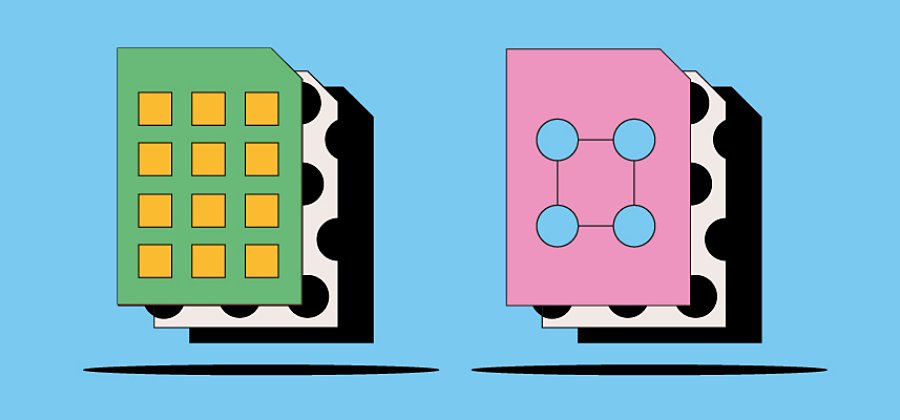
What you’ll learn.
- What is a raster file?
- What is a vector file?
- What is the difference between raster and vector files?
- Raster vs. vector files: frequently asked questions.
What is a raster file?
Raster files are images built from pixels — tiny colour squares that, in great quantity, can form highly detailed images such as photographs. The more pixels an image has, the higher quality it will be, and vice versa. The number of pixels in an image depends on the file type (for example, JPEG, GIF, or PNG).
Learn more about raster file types
What is a vector file?
Vector files use mathematical equations, lines and curves with fixed points on a grid to produce an image. There are no pixels in a vector file. A vector file’s mathematical formulas capture shape, border, and fill colour to build an image. Because the mathematical formula recalibrates to any size, you can scale a vector image up or down without affecting its quality.
Learn more about vector file types
What is the difference between raster and vector files?
Raster and vector files are the two most popular formats used for visual content. They represent images in very different ways, so there’s a lot to consider when deciding which one to use. Some of the main differences between raster and vector include:
Resolution.
One of the main differences between raster and vector files is their resolution. The resolution of a raster file is referred to in DPI (dots per inch) or PPI (pixels per inch). If you zoom in or expand the size of a raster image, you start to see the individual pixels.
Raster files display a wider array of colours, permit greater colour editing, and show finer light and shading than vectors — but they lose image quality when resized. An easy way to tell if an image is raster or vector is to increase its size. If the image becomes blurred or pixelated, it’s most likely a raster file.
With vector image files, resolution is not an issue. You can resize, rescale, and reshape vectors infinitely without losing any image quality. Vector files are popular for images that need to appear in a wide variety of sizes, like a logo that needs to fit on both a business card and a billboard.
Uses.
Digital photographs are usually raster files. Many digital cameras automatically shoot and save photos as raster files — and the images you see online are often rasters, too. Raster files are also commonly used for editing images, photos, and graphics.
Vector files work better for digital illustrations, complex graphics, and logos. That’s because the resolution of vectors remains the same when resized, making them suitable for a wide variety of printed formats.
Some projects combine both raster and vector images. For example, a brochure may use vector graphics for the company logo but raster files for photography.
File sizes.
Raster files are generally larger than vector files. They can contain millions of pixels and incredibly high levels of detail. Their large size can impact device storage space and slow down page loading speeds on the web. However, you can compress raster files for storage and web optimisation to make sharing faster and easier.
Vector files are much more lightweight than raster files, containing only the mathematical formulas that determine the design.
Compatibility and conversion.
You can open raster files in many different apps and web browsers, making them easy to view, edit and share. Vector files aren’t as accessible — many vector file types require specialised software to open and edit the files. Though it can present some challenges, it’s possible to convert vector files to raster or raster files to vector when needed.
File and extension types.
Your software will usually determine your file type, whether it’s raster or vector. There are multiple types and extensions of both raster and vector files, each with its own features. Learn more about some of the common ones:
Raster file types.
Extension
.jpg
.png
.gif
.bmp
.tiff
.psd
Extension
.svg
.eps
.ai
.dae
.ps
.emf
You can open and edit vector files in Adobe Illustrator.
Raster vs. vector files: frequently asked questions.
How do you know if an image is a vector?
You can see if an image is a vector by checking for a vector file extension like those listed above. Another method is to resize the image. If it maintains the same resolution when you increase its size, it’s most likely a vector file. If the image gets pixelated, it’s most likely a raster file.
Is a PDF a raster or vector?
Most PDFs are vector files. However, it depends on the programme used to create the document because PDFs can also be saved as raster files. For example, any PDF created using Adobe Photoshop will be saved as a raster file.
Can you turn a JPEG into a vector file?
You can use Adobe Illustrator to convert a JPEG into a vector:
- Open your JPEG image in Adobe Illustrator.
- Select the JPEG and in the top bar, click Image Trace.
- Then select Expand to convert into a vector image.
- You can right-click and choose Ungroup to separate the new vector image from its background if desired.
- Edit the image, save and export it as a vector file.
Decoration & Branding Methods and Differences.
Decoration & Branding Methods and Differences.
With so many different options out there for decorating your custom apparel or promotional products, how do you know when to use each method? Each decoration option comes with certain pros and cons as well as some limitations.
To make things easy, we have explained our most common forms of branding below.
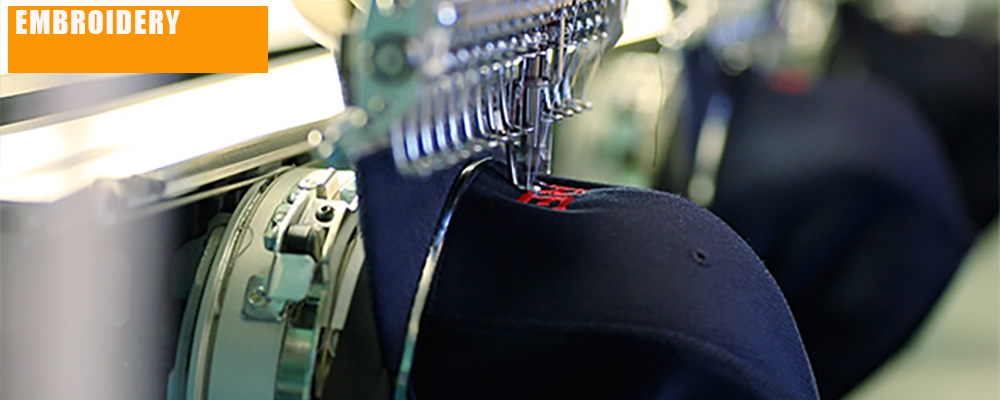
EMBROIDERY
By far the most popular branding style. To turn your logo in to the embroidery format we must first digitise your logo. This means that we need to replace the colours and lines of your logo with threads. From here the appropriate thread colours are chosen and we do a sample. Once approved, your file is uploaded in to our massive industrial machines, the garments are "hooped" to stay in the correct position and after programming, the machine will start to embroider your logo on to the garment(s).
When to Use Embroidery as a Decoration Method
Embroidered logos typically look best on polos, jackets, woven shirts, caps, and bags, but this is a truly versatile style of decoration. We've embroidered just about every style of apparel & accessory on our site!
Embroidery is Ideal for…
- Polo Shirts
- Hats, Beanies & Visors
- Jackets & Outerwear
- Sweatshirts & Layering
- Backpacks & Bags
- Embroidered Towels & Blankets
- Much more
Benefits of Embroidery as a Decoration Method
- There is an added texture to the design.
- The product does not need to be laid flat like in printing, making embroidery suitable for hats and bags.
- The intricate design evokes a high perceived value and sense of professionalism.
- More durable and resistant to damage from washing than most decoration methods.
Drawbacks of Embroidery as a Decoration Method
- The number of colors used in the design is limited to the EMBROIDERY THREADS and prices typically increase with additional colors.
- Embroidery is only a suitable decoration method for fabric.
- Embroidery machines can struggle with small lettering or fine details in the design.

Screen Printing
An easy way to think about this is as a photographic stencil process. A stencil is created and then is used to apply layers of ink directly onto a product. The result is the screen's image transferred to the print surface. The versatility of this decoration method allows it to be used on a wide variety of items.
When to Use Screen Printing as a Decoration Method
Screen printing, also known as silk screen printing, is the most cost-effective method for large quantity print runs (around 50+ items) and works especially well with items like t-shirts and tanks. A complex design with many different colors requires different stencils for each color, so this decoration method is best for logos with 4 colors or less.
Screen Printing is Ideal for…
- T-Shirts
- Activewear & Sports Apparel
- Screen Printed Sweatshirts & Hoodies
- Promotional Pens & Custom Printed Notebooks
- Custom Drinkware
- Screen Printed Electronics
- Custom Golf Balls
- Much more
Benefits of Screen Printing as a Decoration Method
- Most cost effective decoration method for larger custom apparel orders.
- Just about any design and ink color can be applied to any product through screen printing.
- Ink is applied thicker than digital printing, making your design more vibrant and easier to see on darker fabrics or surfaces.
Drawbacks of Screen Printing as a Decoration Method
- The necessity to create screens means screen printing is not ideal for smaller order sizes or individually personalized items.
- Prices typically increase on orders with a high number of colors.
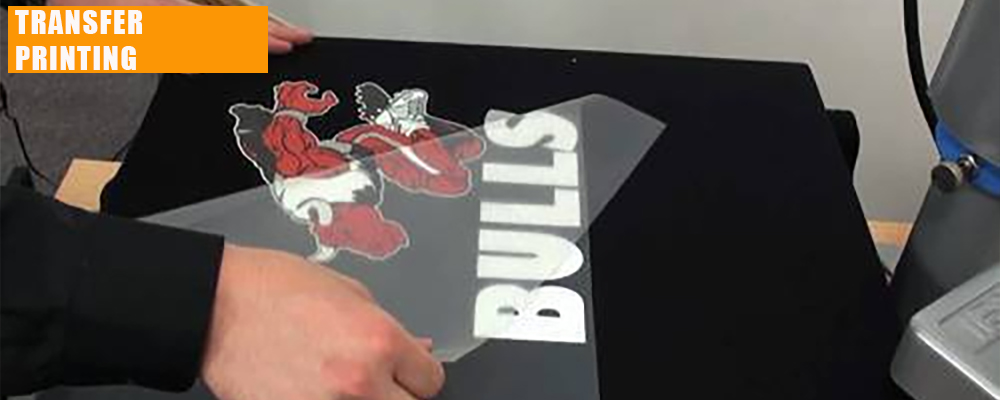
Heat Transfer Printing
If you have ever used an iron to press a decal onto a shirt then you know the basis of heat transfer, but our method is exceptionally more advanced. The digital heat seal decoration method utilizes regulated heat and pressure to thermally bond graphics onto a material’s surface.
When to Use Heat Transfer as a Decoration Method
Heat transfer, also known as digital transfer, is a great decoration choice if you are looking for affordable design options with unlimited colors. With decoration methods like embroidery and screen printing, you are using physical resources - thread and ink - to create a logo. This cost can be avoided with heat transfer, making it the most ideal decoration option for smaller orders.
Heat Transfer is Ideal for…
- T-Shirts
- Activewear & Sports Apparel
- Sweatshirts & Hoodies
- Backpacks & Bags
- Teamwear
- Team Uniforms & Jerseys
Benefits of Heat Transfer as a Decoration Method
- Minimal setup costs and equipment make heat transfers ideal for smaller order sizes.
- Affordable individually personalized decoration, such as sports uniforms.
- Allows for finer details and smaller text than embroidery.
- Heat transfer is available in many different finishes and styles.
- Environmentally friendly.
Drawbacks of Heat Transfer as a Decoration Method
- Logos and designs larger than 15 inches tend to be more expensive than other design methods.
- An image does not last as long as some other decoration methods and the printed area is not very breathable.
- Unable to use an iron on the printed area of the garment.
- When logos are too large the texture of the design can be thrown off.
- Should not be done on certain synthetic materials that can’t be exposed to the high heat from the iron.
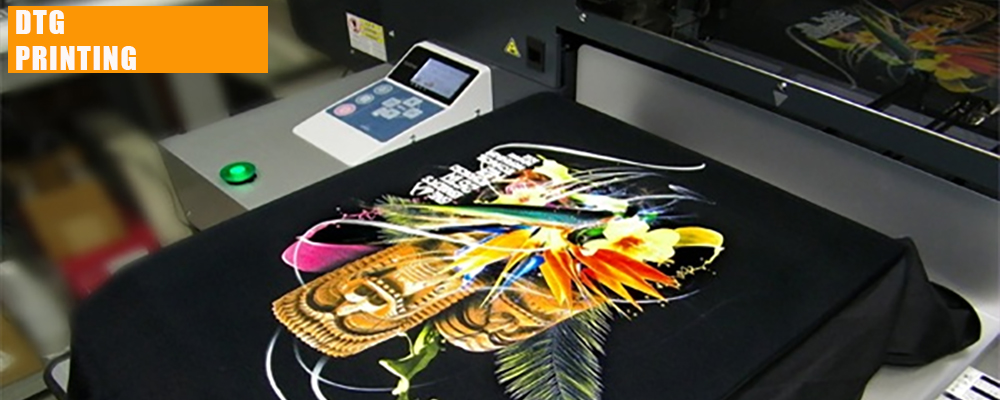
DTG Printing
You can think about digital printing, or direct to garment printing, as a similar process to printing a document from your computer. An image is created with no restraints to the number of colors or type of artwork used, and the image is printed or affixed directly onto the material. With embroidery & screen printing, you are dealing with physical resources (thread & ink) to create a logo; with digital printing, full color, high definition logos can be done economically, even in small quantities.
When to Use Digital Printing as a Decoration Method
Commonly used as a substitute for screen printing on smaller orders, digital printing also works well with logos that require a high amount of detail or are very graphics heavy. This is also a commonly used option for logos that contain a gradient, as the print can closely match the digital version seen on a computer screen. Check out our breakdown of the differences between screen printing and digital printing here.
Digital Printing is Ideal for…
- Notebooks
- Water Bottles & Drinkware
- Electronics
- Promotional Products
- T-Shirts
- Activewear & Sports Apparel
- Printed Sweatshirts & Hoodies
Benefits of Digital Printing as a Decoration Method
- Easier set up than screen printing – no screen creation or color separation required.
- Ability to print more precise details in a broader range of colors.
- Great for smaller order sizes.
Drawbacks of Digital Printing as a Decoration Method
- Digital Printing is typically more expensive than screen printing for large orders.
- Certain Direct to Garment Machines can only print on 100% cotton fabric.
- Digital Printing is slower than screen printing for large orders.
- DTG Machines can struggle with printing multi-color designs on dark fabrics.
3D Embroidery
3D puff embroidery is done by placing a foam pad, or “puff”, onto your products and then having your embroidery machine sew an outline of your logo or design. Once this is complete you simply remove the excess puff around the outside of the embroidered outline and you’ve got a 3D design. You can read our complete step by step guide to custom 3D puff embroidery here!
When to Use 3D Embroidery as a Decoration Method
3D embroidery is used almost exclusively on custom hats and caps to give your logo or design depth and height. Outside of headwear, 3D embroidery is used on other heavy-fabric items like sweatshirts, hoodies, and workwear.
3D Embroidery is Ideal for…
- Custom Hats
- Sweatshirts & Hoodies
- Workwear
Benefits of 3D Embroidery at a Decoration Method
- Extremely durable – the design should outlast the garment itself.
- The logo is more noticeable because of the 3D design.
- More stylish and sophisticated look.
Drawbacks of 3D Embroidery as a Decoration Method
- Not ideal for intricate designs because of the thickness necessary to achieve the 3D appearance.
- More expensive than traditional embroidery because of the extra thread used.
- Not suitable for lighter weight fabrics.

Vinyl Transfer
This transfer process uses heat to activate and attach a vinyl sticker to a fabric. Vinyl is soft to the touch with great stretch and is durable enough for sportswear. You can read our complete step by step guide to custom vinyl transfer here!
When to Use Vinyl Transfer as a Decoration Method
Vinyl transfer has especially great durability. Perfect for uniforms and jerseys, as they are worn frequently and go through a lot of wear and tear. This decoration option is extremely dependable wash after wash.
Vinyl Transfer is Ideal for…
- T-Shirts
- Activewear & Sports Apparel
- Sweatshirts & Hoodies
- Custom Backpacks & Bags
Benefits of Vinyl Transfer as a Decoration Method
- The image is long lasting and durable.
- Your company logo or custom design is easily applied to any fabric or material that can absorb color.
- Vinyl transfer is a very affordable decoration method.
Drawbacks of Vinyl Transfer as a Decoration Method
- Preparing the vinyl design can be time-consuming.
- It is possible to add multiple colors to your design, but it requires you to layer solid colors to get there and that just adds time to the process.


